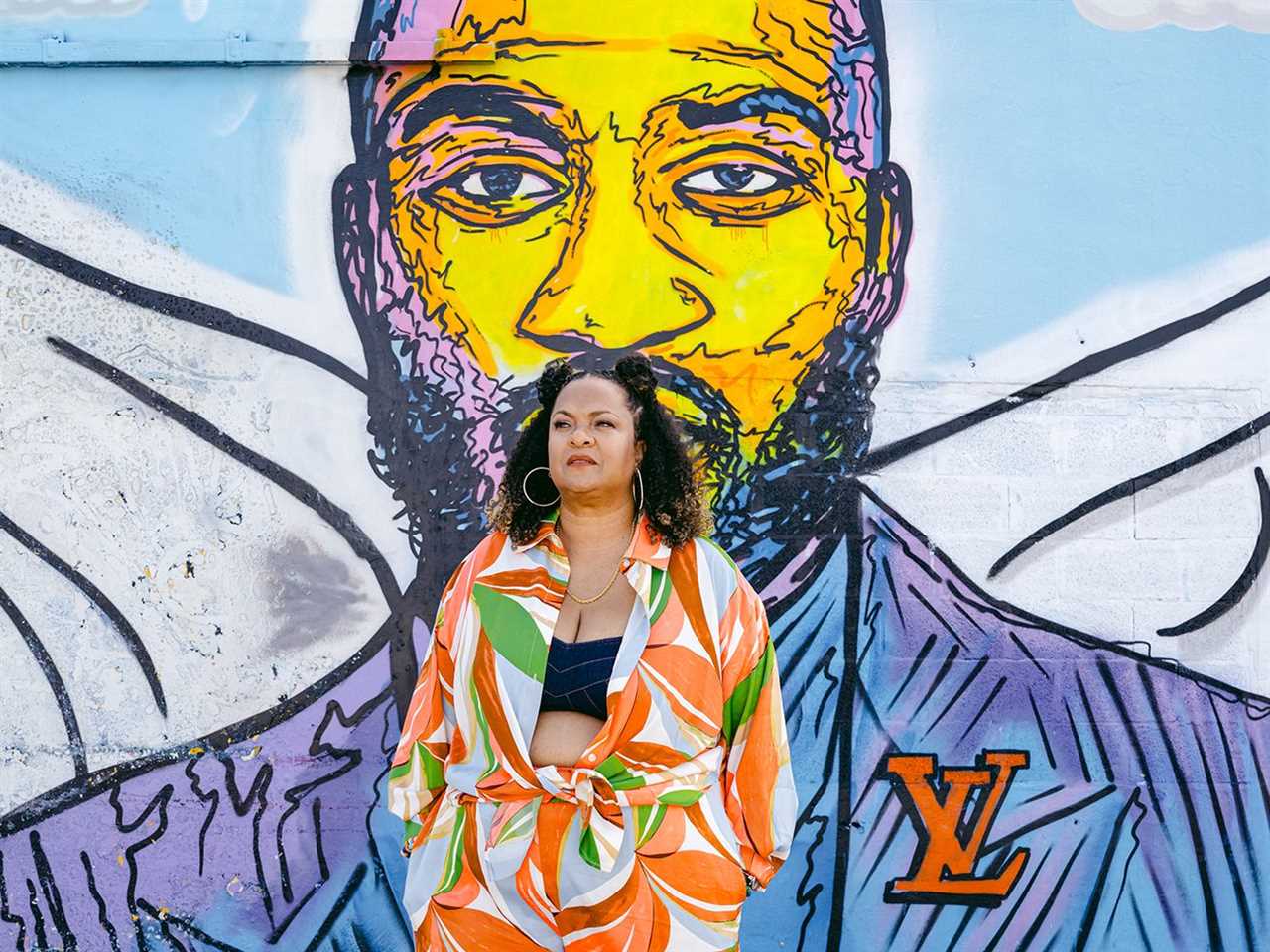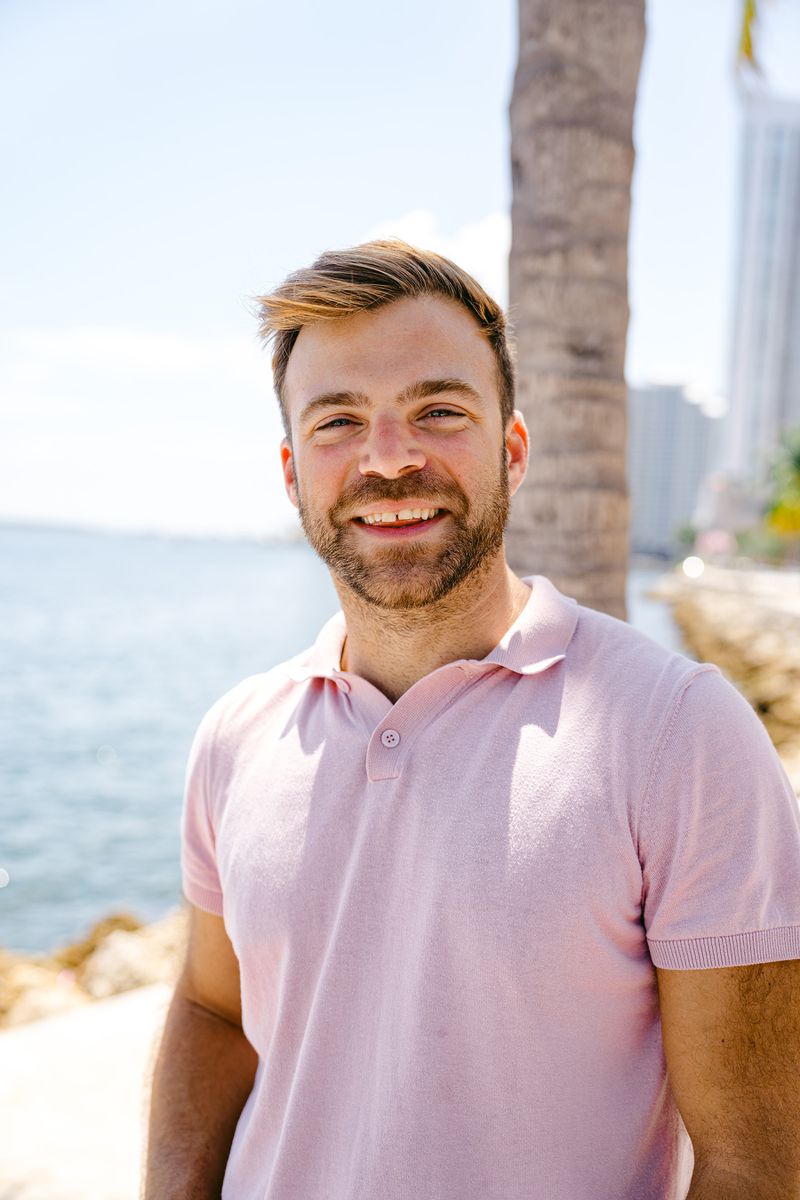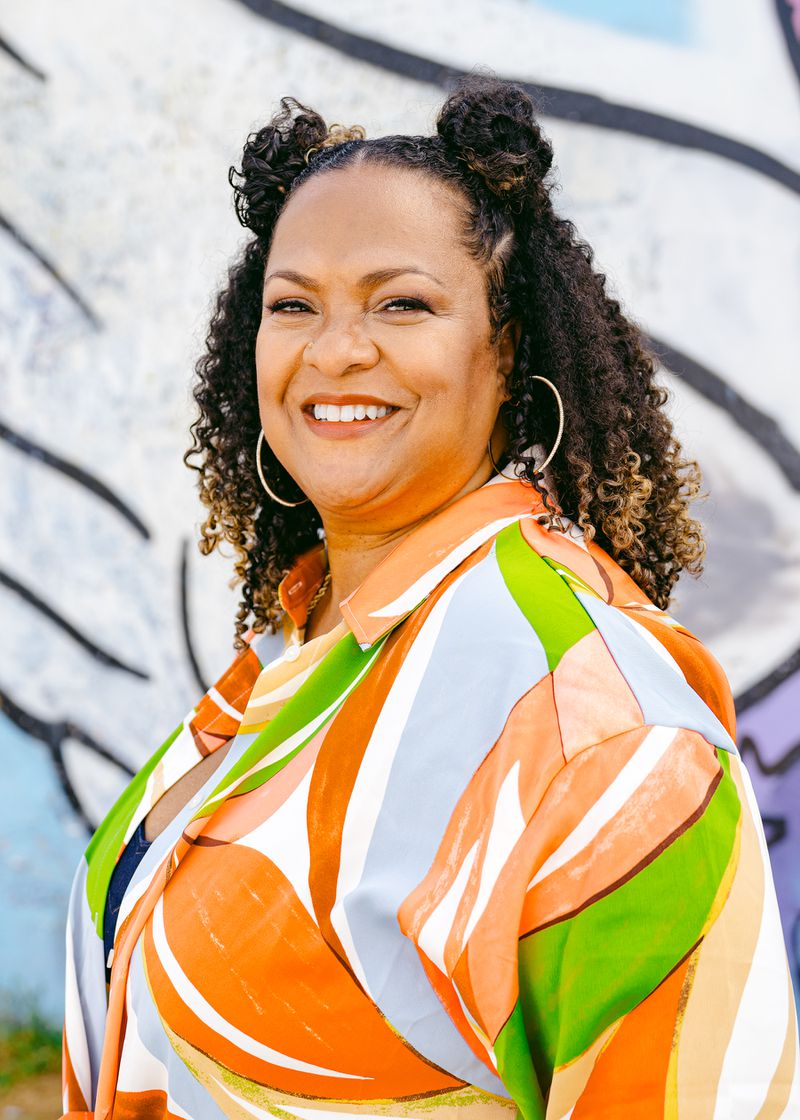
One of the fastest-growing states in the nation is also one of the most complicated.
BOYNTON BEACH, Florida — Moving to Florida was never part of Andrew Ford’s life plan. “I angered some deity, and ending up here was my punishment,” the 35-year-old says wryly.
In early 2022, Ford was living in Nashville, Tennessee. The year before, he’d released a low-budget indie horror film called The Reenactment. The movie did okay — it won best horror feature at the Atlanta Underground Film Festival — but months after its release, the film had yet to recover his investment in it, and his rent in Nashville was painfully high. It was time to look for a job.
He put in a bunch of applications. He was hoping to move to Atlanta, and got an opportunity to work for his favorite baseball team, the Atlanta Braves. There was just one catch: Ford was not going to be based in Atlanta, but at the team’s spring training facility, in North Port, Florida. In July, Ford packed up and headed south to the landlocked, rapidly growing city of roughly 75,000 people situated between Sarasota and Fort Myers.
He wasn’t thinking about it at the time, but Ford was joining in one of the most notable American migration trends since the start of the pandemic. To put it unscientifically, a lot of people have been moving to Florida.
Even in a state that grows by an average of 295,000 people per year, the numbers have been eye-popping. Between July 2021 and July 2022 alone, Florida’s population increased by more than 400,000, making it the fastest-growing state for the first time in 65 years — a striking statistic for a place that already has the third-largest population in the country. It was like adding another Miami (population, about 440,000) in just 12 months.
“Any growth in the neighborhood of 400,000 is very high for Florida,” says Stefan Rayer, director of the Population Program in the Bureau of Economic and Business Research at the University of Florida. The old cliché of snowbirds heading to Florida is still true: Retirees are driving the gains. “When you look at the age distribution of the migrants, the biggest permanent gains tend to be in retirement ages — late 50s and 60s,” Rayer says. But, he adds, a lot of people in their 20s and 30s are moving, too.

Raymond Lord III, a 34-year-old native of rural New York who was living in Austin, Texas, jumped at the chance to move to Miami in 2021 when his company wanted to begin operations in the city. After living in Argentina, Peru, Colombia, Costa Rica, and Mexico for years, it feels more like home. “I love the fact that it has a Latin American personality,” he says.
For decades, Florida has held a special place in the collective consciousness of Disney fans, AARP readers, golfers, beach lovers, and Parrotheads, but the state’s appeal goes beyond that. Anyone who’s been charmed by Florida’s tropical climate, or cultural diversity, or quirky beach towns, knows that there’s something there for almost everyone to love, as long as they can get past the things people love to hate about Florida.
To better understand what’s motivating people to move now, Vox spoke with nearly two dozen newly minted Floridians, most of whom arrived after 2020. Among the usual reasons people give for moving there — year-round sunshine, the lack of state individual income tax — was that the pandemic created new opportunities. Some who had always planned to retire there moved up their timelines. Several in the middle of their careers came explicitly for work, or for their spouse’s job. A few took advantage of new remote office policies. Those who didn’t move for work mostly relocated because of some special connection to the state – to be closer to family and friends, or to return to a place they’d vacationed and loved in the past.
For some, living in Florida is actualizing a long-held dream. The state, however, is in the midst of major change. With costs of living rising, the political and cultural climate shifting, and so many newcomers arriving every day, the reality of moving to the Sunshine State has been more complicated than many of them expected.
Anyone who’s ever moved to Florida, or spent significant time there, knows it’s a really strange state, in ways that feel both analogous to the United States and entirely distinct from it. If the US is a diverse and peculiar place, Florida is, too, on a smaller, swampier scale. Its population is “an incredible mix of the transplants from up north, the beach bums, the hippies and the proud weirdos who live in the Keys, Cubans in South Florida, [and] a mix of various Latino immigrants,” says David Wunderlich, a 38-year-old Florida native who moved back to the state in 2021.
Florida is on the cusp of several national trends, too, including the country’s turn to a very specific form of post-Trump partisanship. The state acts as the unofficial capital of MAGA country, the now-permanent home of the former president where lawmakers have, since 2022, been passing state laws seeking to curtail the rights of LGBTQ people, women seeking abortions, and teachers.
Florida’s political landscape transformed dramatically over the last 15 years, from a purple state that narrowly elected Barack Obama president twice, to a place that then voted for Donald Trump twice. In 2022, the state re-elected Gov. Ron DeSantis (R) by nearly a 20-point margin and gave Republicans a supermajority in the state legislature. As he’s built a national profile, DeSantis has pitched Florida, which he’s turned into a testing ground for hard-right conservative lawmaking, as a blueprint for the rest of the nation, and he has touted the influx of new residents as a tacit endorsement of his governance.
“We’ve witnessed a great American exodus from states governed by leftist politicians imposing leftist ideologies and delivering poor results. And you’ve seen massive gains in states like Florida, who are governing according to the tried-and-true principles that President Reagan held dear,” he said in a speech in March, adding that people “voted with their feet.”

Plenty of newcomers Vox spoke with took issue with the idea that they were moving for political reasons, but there’s good evidence that suggests that many of the newcomers are Republicans. According to L2, a data analysis firm that analyzed voter registration records of 535,000 people who moved to Florida between March 1, 2020 and May 1, 2023, and registered to vote, 45.6 percent registered as Republican. Only 22.5 percent registered Democratic, and 29.5 percent registered as non-partisan. (Because the numbers include only those who registered in a previous state, moved to Florida, and registered again, the number likely doesn’t capture the total picture of people who moved.)
For Rebecca Pytell, a 27-year-old food blogger who moved to Delray Beach by herself in August 2021, politics wasn’t the draw — she wanted to be in a warmer climate and closer to the beach — but it didn’t hurt. “I am a pro-Trump conservative Republican. I am really happy I left New Jersey, especially after Covid,” she says. “Knowing that the people I support are running the state, I felt comfortable with that.”
“Trump and DeSantis are the two most relevant politicians in the Republican party,” says Ryan Williams, a former spokesperson for Mitt Romney and one of the thousands of Republicans who became residents of Florida in 2022. Williams was working for Romney during the 2012 campaign when the now-senator narrowly lost the state. Back then, the state had 4.2 million registered Republicans; by late 2022, the state had 5.3 million. “It’s a different state than when I was working on campaigns here years ago,” Williams says.
Other transplants with more liberal politics feel like there are, in fact, two Floridas: one the unfussy place filled with artists and hippies and delightful weirdos, where you might find an exotic bird sanctuary and strawberry patch tucked behind a strip mall, or a state park that features underwater performers dressed as mermaids, or a bunch of baby alligators penned into a roadside mini-golf course; the other a land where culture warriors let their Trump flags fly from the backs of the golf carts and oversized trucks they ride en route to ban books from public schools.
“I’m having trouble holding two realities in my mind at the same time — one of Florida at large and what’s being talked about in the news and laws being passed, and Orlando, which feels different,” says Cody Lunsford, a 29-year-old who moved to Orlando from Auburn, Alabama, in 2020 for work. It’s been difficult to understand how the warm, welcoming, community he’s found there fits with the tone set by the state’s politicians. The other Florida does sometimes come into view, like when Lunsford saw protestors outside of Disney World during the governor’s war with the park over its opposition to what has become known as his “Don’t Say Gay” bill. “It’s a hard circle to square, living in Orlando specifically, where all of our theme parks operate on the mentality of ‘everyone is welcome here.’ That’s just built into the DNA.”
Some residents who dislike Republican governance are finding that there seems to be a limit to how much more they’re willing to take. The right-wing turn is creating a new reverse trend, of people leaving the state or considering it.
Peter and Randi Salvato, both 44, are among them. They moved from New York in 2016, but still consider themselves transplants. “Our thoughts at the time were that we are going to be New York progressives moving to a purple state,” Peter says. “At that point, Florida was still considered purple.”
“Then we moved—” Randi says. “—And this place became MAGAstan,” Peter chimes in.
“It’s been a downward spiral ever since,” Randi says.
As for Ford, his first year in Florida was a period of adjustment. About three months after he arrived, Hurricane Ian ripped off the roof of the training facility’s press box. Even though he was coming from Tennessee, which is dominated by Republicans, he was used to life in Nashville, where residents are more liberal. Right away, he noticed the “Let’s Go Brandon” bumper stickers (a slogan conservatives use to express their hatred of President Joe Biden) on several vehicles. “I don’t really like the guy either,” Ford says, “But it’s just a dumb joke.” He finds that people sometimes assume his politics, which are liberal, are conservative because he came from Tennessee.
There are things he loves about living in Florida — his job and his coworkers, the weather. He also wants to move to Atlanta. The sooner the better.


Not everyone is looking for an exit. When the pandemic started, Abigail Dillon and her family were vacationing in the state. They ended up stuck there for weeks, unable to go home to Minnesota. When it was time to return, they realized they didn’t want to leave. Dillon is an artist, designer, and one of the few female sneaker designers in the country. She was intrigued by the idea of living in a place with a vibrant arts scene.
In 2020, as Miami was drawing New Yorkers, Silicon Valley techies, and restaurant industry veterans from other big cities, further cementing its status as a world-class city in its own right, Dillon and her family relocated there. Her bright, colorful sneakers have since been on display during Art Basel Miami Beach, the famous art fair, and she’s been featured on the local news. Dillon, who’s 49, feels encouraged by how the community has embraced and celebrated her work. “In Miami, you think young and hot — that’s who’s moving here. As an older woman coming into the arts scene here, it’s remarkable that I’ve been as welcome and respected as I have been,” she says. “I don’t know that it would have happened anywhere else.”
For many of the newcomers, the plan to move to Florida predates the state’s rightward turn. The dream of moving there is a powerful one, sustained over many years of vacations. Now that Baby Boomers are reaching retirement age, even more of them are expected to flock to the state.
Gary Wondrash, a 63-year-old physical education teacher from Wisconsin, visited Florida in 2008 with his wife. She was enthralled by the ocean air and sea shells washing up on the beach, by Florida’s candy-colored sunsets and dolphins. They returned in 2012 for more wildlife spotting; on a later visit, Gary had an alligator try to eat his selfie stick. On one trip, they went swimming with manatees, on another they went snorkeling in the coral reefs. One time, they even swam with a gator. “It was really, really cool,” he says. “One of the most exciting things I’ve ever done.”
In 2020, Wondrash retired from his job in Wisconsin and the two permanently relocated to Florida, which feels like a grand adventure. It’s a natural paradise. He does wildlife photography and posts video diaries online, and is focusing on the recreational opportunities he and his wife are able to have — what he calls “the advantages of being in a beautiful state.”
On Facebook, there’s a cottage industry of communities for people thinking about permanently relocating to the Sunshine State. Locals offer advice, newcomers ask questions, real estate agents hunt for clients, and recent arrivals help guide aspiring Floridians through the process. Michelle Fenstermaker and Shane Schaefer, two friends from Ohio in their 50s who separately made the move between 2021 and 2022, post videos on their YouTube channel, Take 10 with Shane and Michelle, documenting their experiences as new Floridians.
“I never thought we’d make a move pre-retirement to Florida,” Fenstermaker says. But when the real estate market seemed hot in 2020, her family put their house on the market. “We’re big Disney lovers and had been down here a lot,” she says. When the house sold, they realized it wasn’t too early to make their post-retirement plans happen.
For Schaefer and her husband, “the key was being in a warmer climate,” plus their daughter, who lived in Tennessee, would soon join them in the state. Moving away from Ohio meant leaving behind a job she enjoyed, to a place dealing with high inflation as more and more people move in. Still, she’s happy with their decision.
One weekend in July, Schaefer and Fenstermaker had booked rooms at hotels in Disney World so Schaefer could renew her annual pass to the park. They had dinner plans at a steakhouse, and a sangria-making class the next day. Schaefer was in the process of building a home. “In Florida, to be able to realize that dream, it’s exciting,” Fenstermaker says. They both have family down there, and friends, and they have each other. They’re in the center of a movement, united by a desire to try a new way of living. Every day now, hundreds of people are joining them.
----------------------------------------
By: Marin Cogan
Title: The dream — and reality — of moving to Florida
Sourced From: www.vox.com/cities-and-urbanism/23853800/florida-population-growth-newcomers-migration
Published Date: Mon, 18 Sep 2023 11:00:00 +0000
Did you miss our previous article...
https://consumernewsnetwork.com/politics-us/the-justice-department-controversy-you-might-not-have-heard






